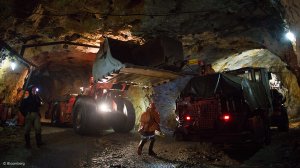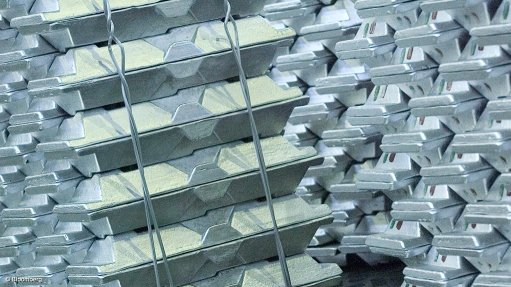Mines must consider social impacts before adopting mechanisation



CREATING COMPETITIVENESS Mechanised and automated technologies are viewed as key indicators of a more competitive mining industry
Photo by Bloomberg
DEONIE BOTHA The nature of mechanised and automated technologies will alter the physical manner in which work is executed and the interaction between man and machine
An understanding of the nature of a modernised mining environment is necessitated by the fact that a modernised mine will impact on both the physical health and safety of individuals employed by the mining industry as well as the social dimensions of mining communities, says occupational health, safety and environmental risk management services provider Nosa innovation head Dr Deonie Botha.
She notes that a literature review conducted by the University of Queensland’s Cooperative Research Centre for Mining over the period 1997 to 2014 revealed that several trends that illustrate the effect of a modernised mining environment on the health and safety of individuals and the social dimensions of mining communities can be identified.
Botha says these trends depict the changing, or modernised landscape of the mining industry, and need to be considered when mining companies embark on a modernisation strategy.
Mechanised and automated technologies are viewed as key indicators of a more competitive mining industry.
“Mining company employees no longer talk about the unreliability of the technologies associated with automation; mines will come to depend upon automation in profound and unspoken ways and they can because automation works reliably, is flexible, safe and can be maintained,” states Botha.
She points out that a 2012 report by economic consulting firm BAEconomics entitled ‘Autonom- ous and remote operation technologies in the mining industry: benefits and costs’ confirmed the commercial value of mechanisation and automation.
The report states that automation essentially substitutes capital for labour and other inputs to achieve the same or a better production outcome.
Botha explains that, essentially, mining com-panies have implemented, or are considering the implementation of mechanised and automated technologies to address several challenges they face.
These include improving operational effi-ciency and productivity, lowering the cost of labour, ensuring uninterrupted operational processes, providing a stable and secure working environment and improving safety to ensure zero harm to employees.
She highlights that, although the economic, operational and safety benefits of introducing mechanised and automated mining could be substantial, there may be some undesired social factors associated with the adoption of these technologies.
Further, Botha notes that the nature of mechanised and automated technologies will alter the physical manner in which work is executed, as well as the interaction between man and machine.
She says it is therefore necessary to iden-tify global trends that characterise the imple-mentation and use of mechanised and automated technologies and, additionally, the impact of these technologies on social, health, safety, and environmental and human factors.
In 2010, the World Economic Forum (WEF), in conjunction with a group of global thought leaders, conducted a scenario exercise to identify the driving forces and determine critical uncertainties that will shape the mining industry approaching 2030.
The drivers identified were categorised as social, technological, economic, environmental and geopolitical in nature. The automation of (mining) operations was identified as one of the primary technological drivers that will shape the mining industry.
Botha says it is noteworthy that the WEF scenario exercise viewed health and safety expectations in conjunction with indigenous communities’ expectations, the skills gap and corporate social expectations as part of the social as opposed to health and safety drivers that will shape the mining industry.
“This clearly portrays the global view that mine health and safety should be considered as having a far wider impact and being more inclusive than merely the physical health and safety of mineworkers.”
She asserts that “very few, if any” innovative contributions, or even trends regarding mechanisation and automation have originated from the South African mining industry.
Botha states that the prevailing discussions focus around the need for productivity improve-ments and a safer working environment with some attention to the social impact of mechanis-ation and automation.
She says there is a “dearth” of scientific research in terms of the impact of mechanisation and auto- mation on factors such as the social impact, upskilling and sustainability of mining commu-nities, as well as human factors.
Botha says that global and local industry trends indicate that the effective implementation and adoption of mechanised and automated technologies are dependent on an in-depth understanding of the impact of these technologies on human factors and social dimensions.
She believes that this understanding and resulting action plans, should include the development of a Health and Safety Centre of Excellence, scientific research and community programmes, as they would be of “critical importance” to the South African mining industry, if it wants to implement mechanisation and automation in a sustainable manner.
“These types of initiatives would ultimately have a positive impact on the health and safety of individuals employed in the industry as well as mining communities,” Botha concludes.
Botha was a presenter at the recent 2015 MineSafe conference, in Johannesburg.
Comments
Press Office
Announcements
What's On
Subscribe to improve your user experience...
Option 1 (equivalent of R125 a month):
Receive a weekly copy of Creamer Media's Engineering News & Mining Weekly magazine
(print copy for those in South Africa and e-magazine for those outside of South Africa)
Receive daily email newsletters
Access to full search results
Access archive of magazine back copies
Access to Projects in Progress
Access to ONE Research Report of your choice in PDF format
Option 2 (equivalent of R375 a month):
All benefits from Option 1
PLUS
Access to Creamer Media's Research Channel Africa for ALL Research Reports, in PDF format, on various industrial and mining sectors
including Electricity; Water; Energy Transition; Hydrogen; Roads, Rail and Ports; Coal; Gold; Platinum; Battery Metals; etc.
Already a subscriber?
Forgotten your password?
Receive weekly copy of Creamer Media's Engineering News & Mining Weekly magazine (print copy for those in South Africa and e-magazine for those outside of South Africa)
➕
Recieve daily email newsletters
➕
Access to full search results
➕
Access archive of magazine back copies
➕
Access to Projects in Progress
➕
Access to ONE Research Report of your choice in PDF format
RESEARCH CHANNEL AFRICA
R4500 (equivalent of R375 a month)
SUBSCRIBEAll benefits from Option 1
➕
Access to Creamer Media's Research Channel Africa for ALL Research Reports on various industrial and mining sectors, in PDF format, including on:
Electricity
➕
Water
➕
Energy Transition
➕
Hydrogen
➕
Roads, Rail and Ports
➕
Coal
➕
Gold
➕
Platinum
➕
Battery Metals
➕
etc.
Receive all benefits from Option 1 or Option 2 delivered to numerous people at your company
➕
Multiple User names and Passwords for simultaneous log-ins
➕
Intranet integration access to all in your organisation




















